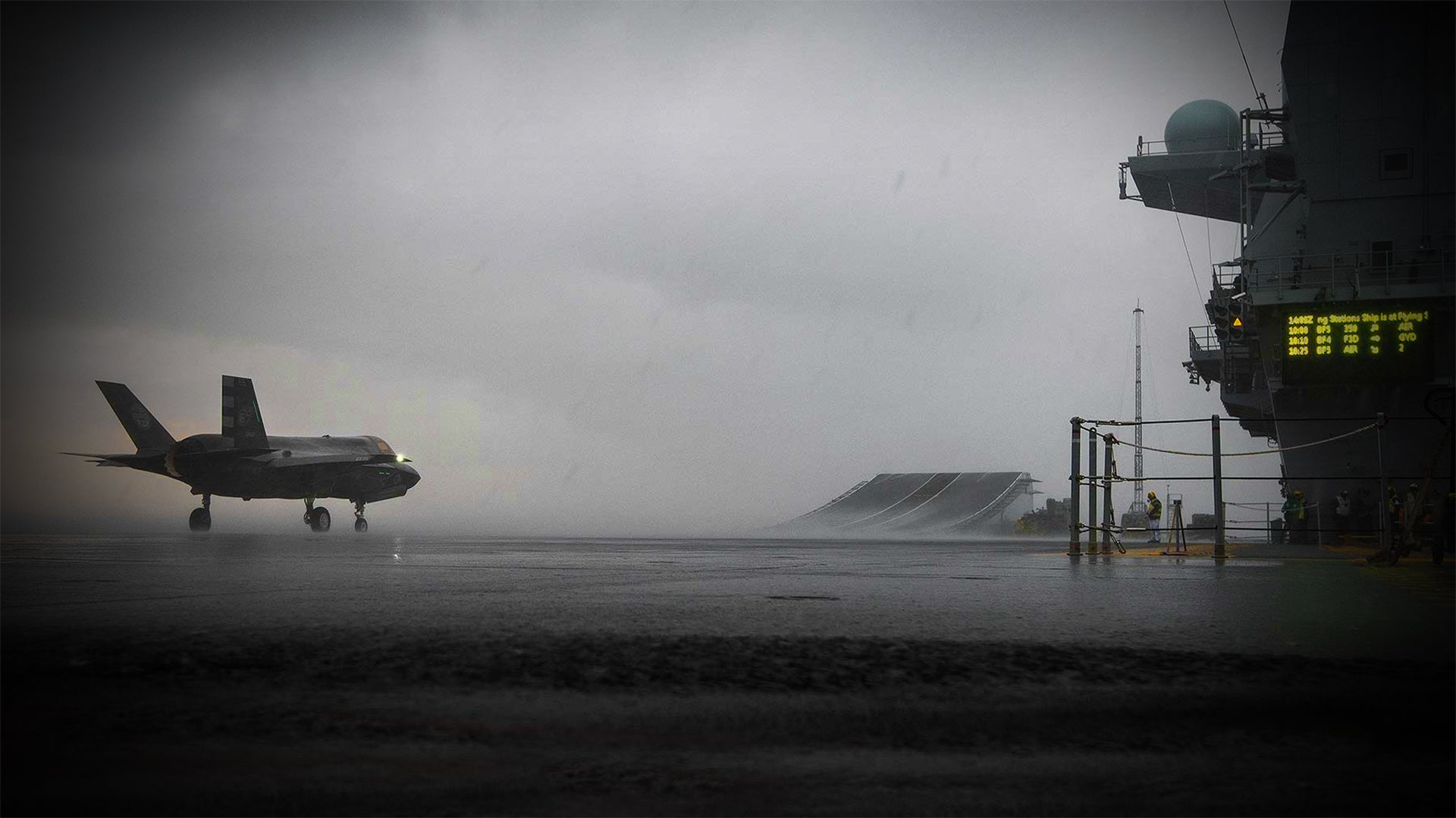As the United Kingdom prepares its next defense review — the Integrated Review of Security, Defence, Development and Foreign Policy — experts close to the program are increasingly talking about a significant cut in the country’s orders for F-35B Lightning jet fighters.
Reports in the British media last month suggested that the United Kingdom may only buy 70 F-35Bs, rather than the 138 aircraft originally planned. Although a reduction in numbers had been long rumored, the story in The Times cited sources close to the government’s defense review — details of which are planned for release later this year. Meanwhile, the UK Ministry of Defence has steadfastly held to the 138-aircraft figure in its communications.
Yesterday, September 15, 2020, a group of experts provided the Defence Committee with an update on the progress made by the UK’s F-35 and Carrier Strike programs, with an eye on how they could impact the ongoing Integrated Review.
To date, the United Kingdom has committed to buying 48 Lightnings by the end of 2025, at a cost of £10.5 billion, according to the National Audit Office, the body that scrutinizes public spending.
The target of 138 aircraft purchased across the lifespan of the program was included in the UK government’s last Strategic Defence and Security Review (SDSR) in 2015. However, the Commons Defence Select Committee later admitted that the figure of 138 was taken “following some hesitation.”
The UK is purchasing the short take-off and vertical landing (STOVL) variant of the Joint Strike Fighter, which is operated by mixed-personnel Royal Air Force and Royal Navy Fleet Air Arm squadrons. The F-35B variant was selected to operate from the Royal Navy’s two new Queen Elizabeth-class aircraft carriers, although exactly how many jets will regularly deploy onboard is unclear.
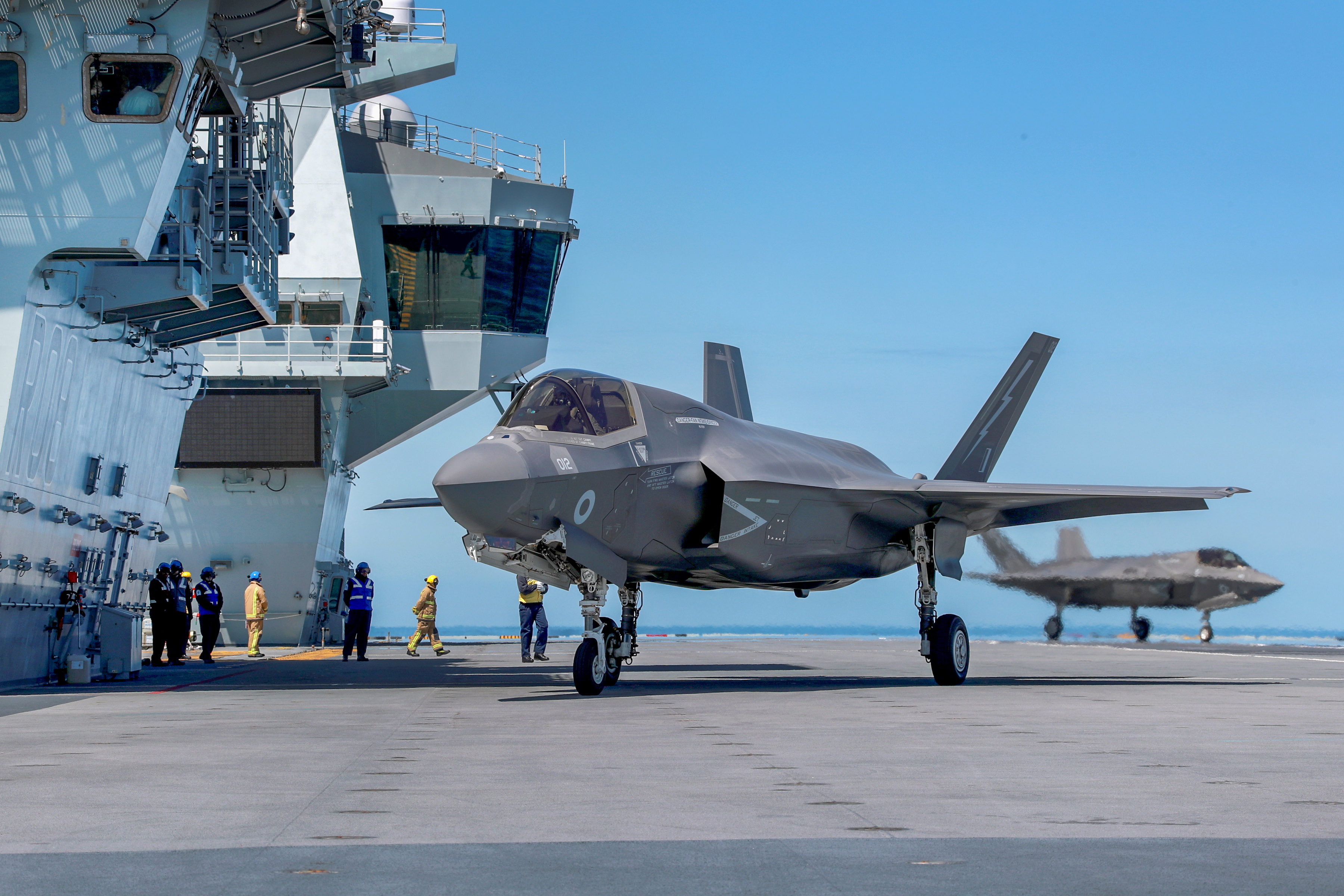
The F-35B “numbers game”
While the Queen Elizabeth-class carriers are designed to operate a maximum of 36 F-35Bs (equivalent to three squadrons), officials have said that 24 Lightnings are a “credible complement” for the Carrier Strike role. The 2015 SDSR included plans to have 24 F-35Bs available on the carriers by 2023. To date, 18 aircraft have been handed over to the United Kingdom, of which 15 are based at RAF Marham, Norfolk. The remaining jets are used for test and evaluation work at Edwards Air Force Base, California.
The figure of 70 F-35Bs has been suggested as a “credible minimum,” reflecting concerns about the costs of the program as the government looks at its future plans across foreign policy, defense and security ahead of the integrated review that’s scheduled to be completed in November.
Speaking to the Defence Committee yesterday, Nick Childs, Senior Fellow for Naval Forces and Maritime Security at the International Institute for Strategic Studies, said he considered a number “significantly higher” than 48 F-35Bs would be required to meet the ambition of 24 jets available for Carrier Strike. Taking into account training and other demands, a figure of 60-70 jets would be reasonable, Childs contended.
Meanwhile, Capt Royal Navy (Rtd) Dan Stembridge, Deputy Chair, Air Power Group at the Royal Aeronautical Society, said the F-35B fleet needed “in the order of 70-80” aircraft, but that this total would also depend on the speed at which they were bought. Buying aircraft too slowly means the initial examples show signs of wear and tear first, and then require replacement themselves. Capt Stembridge added that he considered four squadrons of 12 aircraft each to be the requirement for continuous high readiness, able to put 24 on a carrier, with the option to “surge” to 36.
Justin Bronk, Research Fellow in Combat Airpower and Technology at the Royal United Services Institute, had a slightly more pessimistic take on these calculations. He pointed out that the RAF Typhoon fleet of 145 provides a “force element at readiness” of around 40 jets only. This can be increased to “70-80 at a push” with the risk of “breaking the whole system.” Bronk said he thought at least 60 F-35Bs would be required to provide a surge capacity of 18-24 jets on the carrier, but the total would likely have to increase to 70 aircraft in the longer term, based on the need for attrition replacements.
Furthermore, Bronk warned, the fleet would have to be increased “significantly beyond 70” if the F-35B was also required to conduct missions over and above Carrier Strike. This is another point that it is hoped the Integrated Review will clarify. While the F-35B numbers game has focused on the demands of Carrier Strike, the wider Armed Forces enterprise is hoping the stealth fighter can fulfill other high-end warfighting roles too, including penetrating defended airspace from land bases.
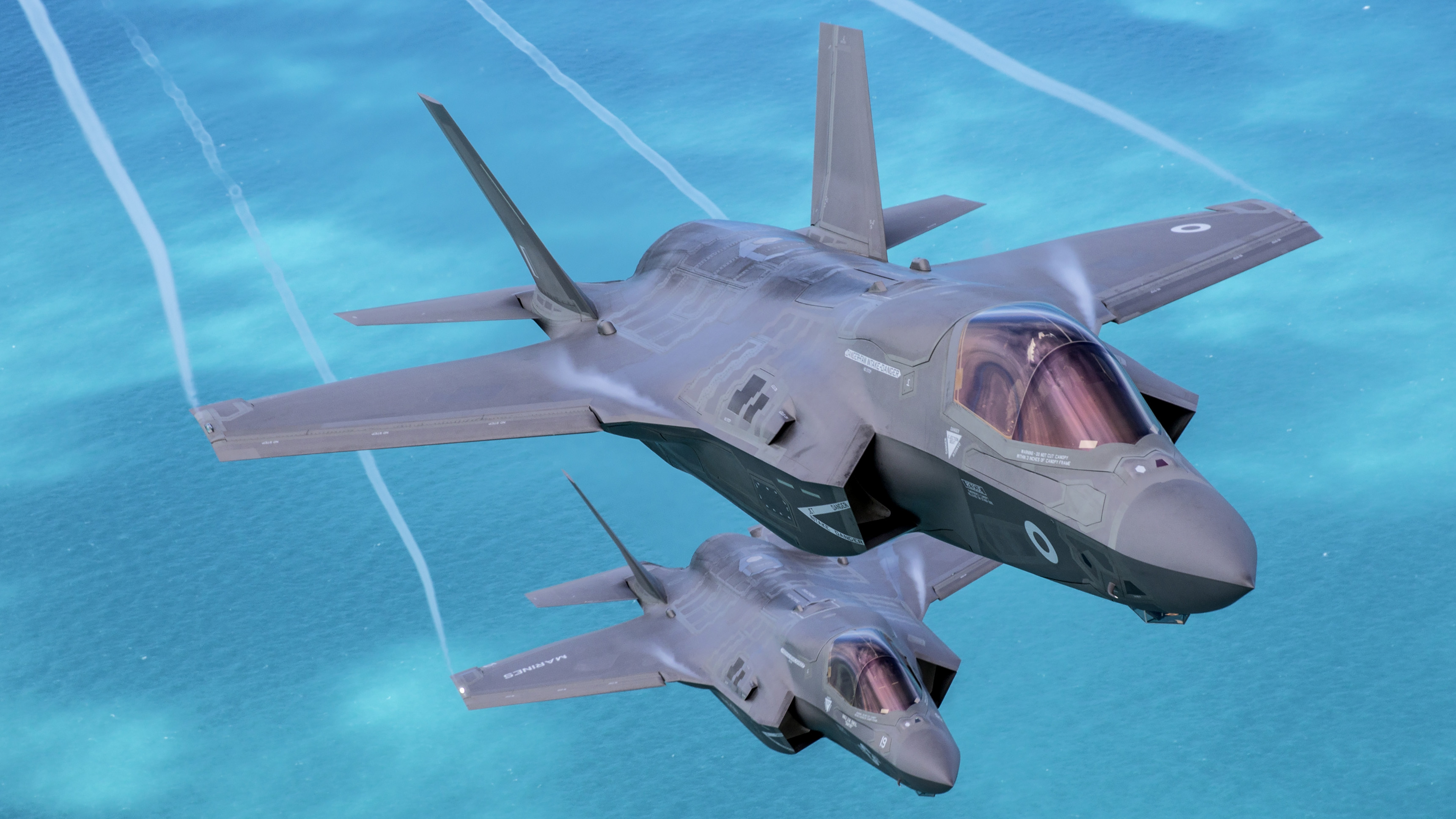
Lightning versus Tempest
A decision on the future size of the overall British Lightning fleet comes at a time when increasing focus is being directed towards the next-generation Tempest fighter program, which is being led by the UK with the aim of fielding a Typhoon replacement from around 2035.
The Tempest project was formally launched under the country’s new Combat Air Strategy at the Farnborough International Airshow in July 2018. It’s being pursued as part of the wider Future Combat Air System Technology Initiative (FCAS TI), which aims to bring together the Ministry of Defence and industry partners to deliver more than £2 billion of technology investment by 2027.
Bronk said he thought the 138-aircraft target was an “aspiration unlikely to be funded,” and argued that the United Kingdom needs to decide whether or not more than 100 F-35Bs are required to meet all requirements. If yes, Bronk contended, then serious cuts would have to be made elsewhere. If the decision favors the Tempest — as a replacement for the current Typhoon and a means to stimulate the defense industry — then equivalent cuts would need to be made. Above all, UK defense planners will have to make a choice between prioritizing the F-35B or the Tempest.
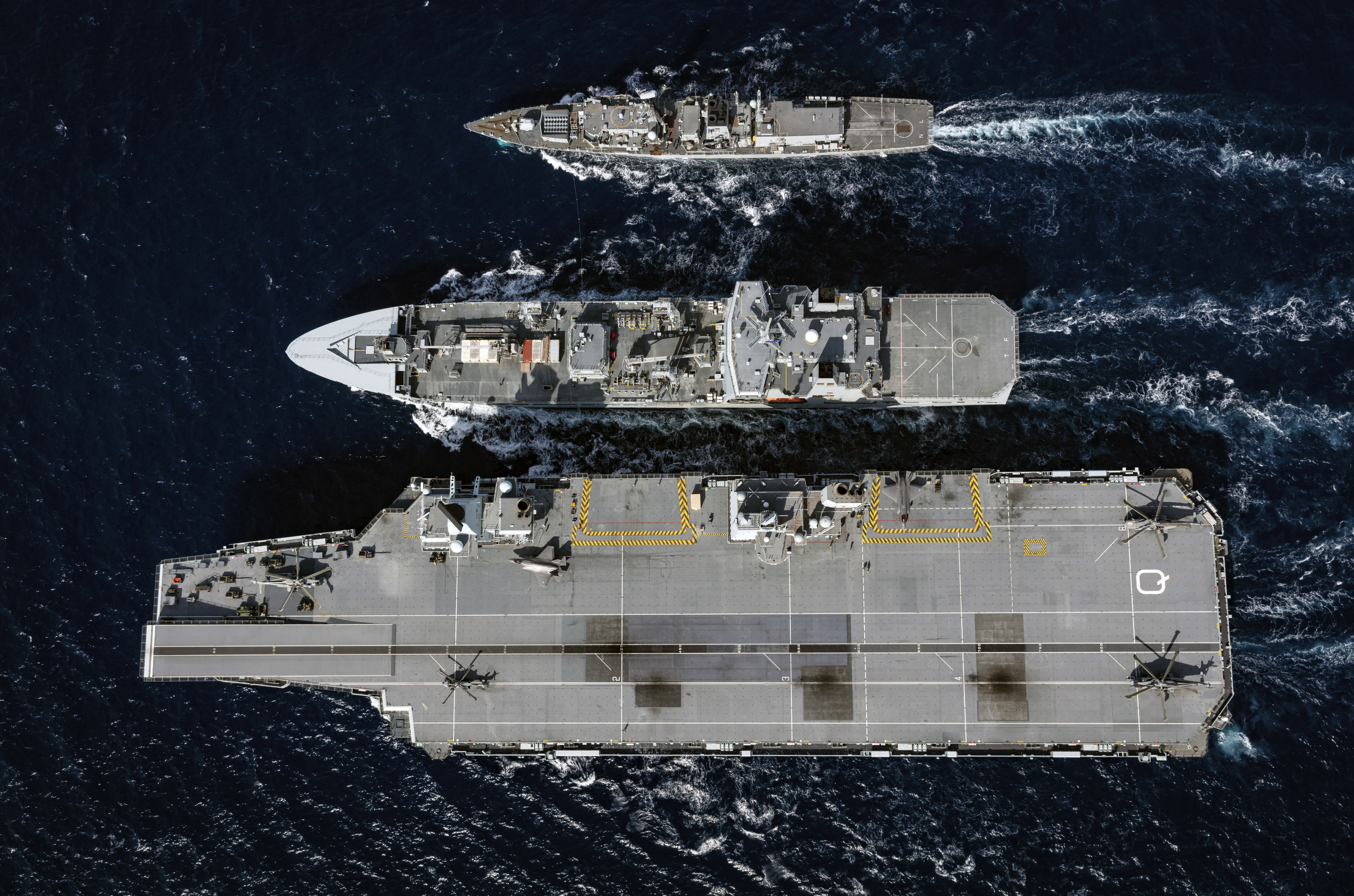
On the industry side, Team Tempest brings together British companies including BAE Systems (responsible for advanced combat air systems and integration), Leonardo (sensors, electronics, and avionics), MBDA (weapon systems), and Rolls-Royce (power and propulsion systems), under the leadership of the RAF Rapid Capabilities Office.
Of course, the United Kingdom’s defense industry sector has a stake in the Joint Strike Fighter program too, but, Bronk argued yesterday, the country’s Tier 1 status ̦— the result of a £2-billion buy-in — is “no longer really a factor,” since it covered the research and development and initial production phases. On the other hand, buying 48-60 Lightnings would knock the United Kingdom down from being the second-largest export customer to “somewhere pretty far down,” among the ranks of small to medium air forces. “There would be consequences,” with such a move, Bronk noted. These could perhaps affect future Lockheed Martin production decisions, affecting UK industry and jobs.
While the Tempest will be a manned fighter it will operate as a “system of systems” alongside unmanned loyal wingman-type drones, as The War Zone discussed here.
Exactly how the launch of the Tempest might affect the United Kingdom’s F-35 program has long been unclear, officials only reiterating that the country still planned to buy 138 Lightnings over the life of the program. But the latest developments suggest this may now have changed and the emphasis is now being put on Tempest — an all-new fighter that offers complete national control.
One Ministry of Defence official told the author: “The work on deciding the timelines and numbers of F-35 to be purchased after [the initial 48 aircraft] will be considered as part of the wider Combat Air Strategy to ensure that the UK has the optimum mix of combat aircraft.”
Another likely factor in determining eventual F-35B numbers is the plan to upgrade a significant proportion of the RAF’s existing Typhoon fleet, including advanced radar. The United Kingdom recently made it clear that it wants to integrate a unique active electronically scanned array (AESA) radar on its Typhoons, as The War Zone discussed in detail here.
Last month The Times quoted an unnamed defense source who confirmed that no final decisions in the review have been taken. “The guiding principle of the [Integrated Review] is to ask ourselves what the threat is, and whether we have the capability to meet it,” the source explained.
If consideration is being given to a reduced fleet of F-35Bs, it may finally lay to rest the idea of a split buy of STOVL variants and conventional take-off and landing F-35A models. There are long-standing rumors that this is the long-term option preferred by the RAF, although it would reduce the number of jets that could deploy onboard the aircraft carriers, which are equipped with a ski jump to help launch the F-35Bs, that then recover via vertical landing or a short rolling landing. With a force of just 70 Lightnings, the case for a split buy would likely become redundant.
In the past, an argument was made for purchasing land-based F-35As after the initial 48 carrier-capable F-35Bs. The F-35A is cheaper to purchase and operate, offers a longer range, greater agility, and increased payload (including 2,000-pound-class weapons), as well as a much larger international user base. However, for these advantages to pay off, it would require F-35As to be purchased in significant numbers, which currently seems an almost impossible prospect.
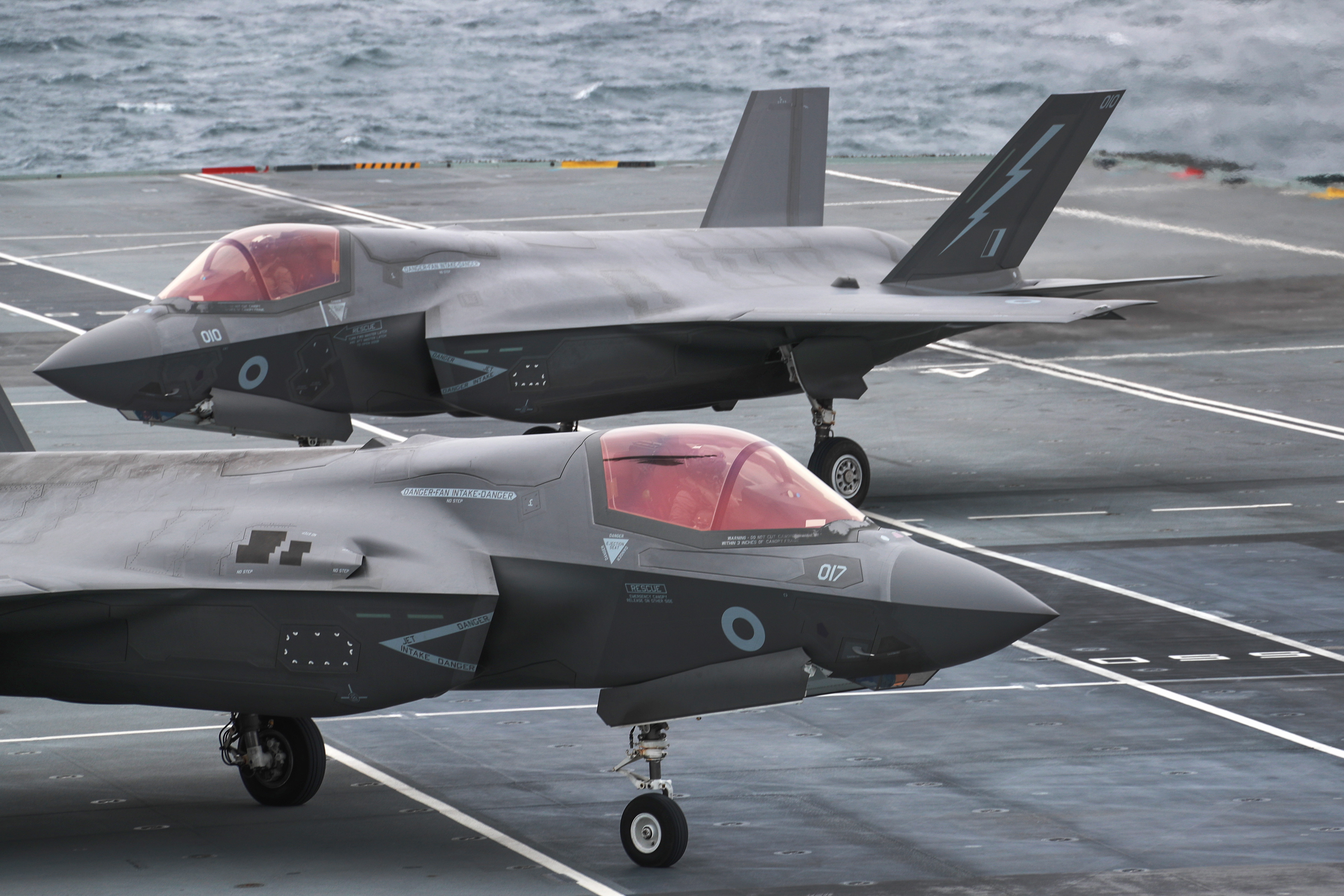
A report from the National Audit Office in June entitled Carrier Strike – Preparing for deployment pointed out the potential pitfalls in the United Kingdom’s aim to reinstate its Carrier Strike capability. It pointed to the lack of funding for enough Lightning jets to sustain Carrier Strike operations over its lifespan into the 2060s. It also noted that the UK will receive seven of its confirmed 48 F-35Bs in 2025, a year later than planned, “in response to wider financial pressures.”
According to National Audit Office figures, the cost of the UK’s Lightning program has risen by 15% since 2017, from £9.1 billion to the current £10.5 billion. This increase was attributed to “capability upgrades, integration of UK weapons and sustainment costs.” The report stated that costs will continue to grow as the fleet is upgraded with new software and weapons.
The United Kingdom joined the Joint Strike Fighter program as a formal partner in 1995, initially with a view to replacing the Royal Navy’s Sea Harrier on the Invincible-class carriers. The UK signed a Memorandum of Understanding (MoU) and agreed to pay $200 million, amounting to 10% of the concept demonstration phase.
Another MoU followed in 2001, committing the UK to invest $2 billion towards development costs as a Tier One partner status during the System Development and Demonstration (SDD) phase. A year later, the UK Ministry of Defence announced that the Royal Navy and RAF would operate the F-35B variant, with a tentative plan to acquire 150 aircraft.
UK Lightning’s path to service
The first F-35B operations aboard the Royal Navy’s new aircraft carrier HMS Queen Elizabeth were recorded in September 2018, involving instrumented test jets belonging to the U.S. Marine Corps, and you can read more about this operation here.
The F-35B achieved initial operational capability in January 2019 and in June that year the U.K. Ministry of Defense announced that RAF F-35Bs had begun been flying combat patrols over Iraq and Syria, flying from RAF Akrotiri in Cyprus in the Mediterranean Sea. The United Kingdom became the third country to deploy its F-35s for combat, after Israel and the United States.
In October 2019 the first British jets operated from the carrier, during the Operational Testing (OT-1) campaign off the US east coast. These tests included mission planning, arming the aircraft with inert Paveway laser-guided bombs, and ASRAAM missiles using the ship’s Highly Automated Weapon Handling System, flying missions, and debriefing.
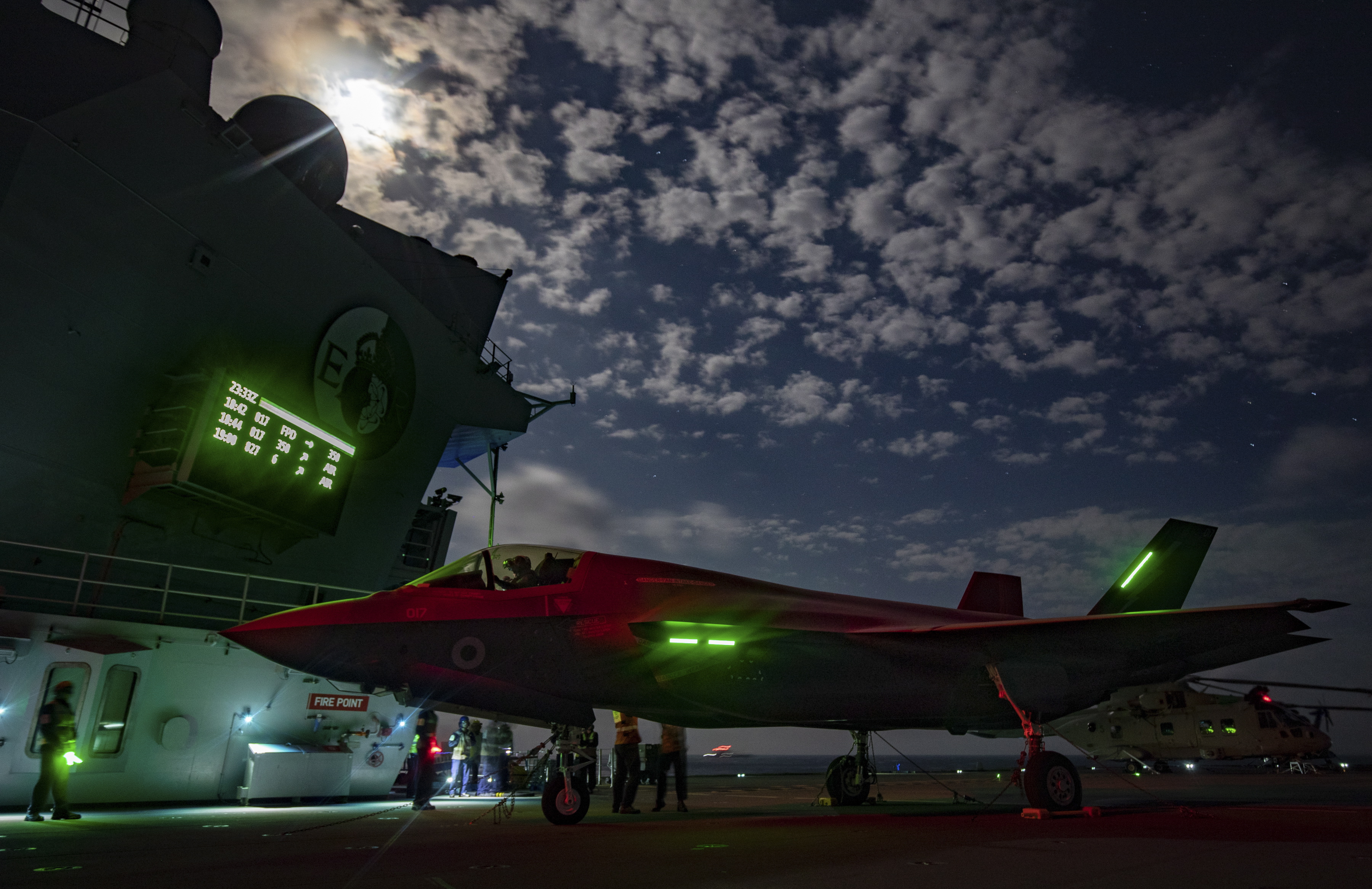
Operations by British Lightnings in home waters commenced in January 2020, when jets from the Marham-based No 207 Squadron, the operational conversion unit, went to sea on board HMS Queen Elizabeth under Exercise Lightning Fury. This involved carrier qualifications for six Royal Navy and RAF pilots.
The Ministry of Defence plans to declare initial Carrier Strike capability in December 2020, followed by full operating capability in December 2023.
The next major milestone for the UK Lightning Force and HMS Queen Elizabeth will be the first operational cruise — Carrier Strike Group 21, or CSG21. Planned for the fall of 2021, this will take the carrier and its jets to the Far East and will also involve F-35Bs from the U.S. Marine Corps’ Marine Fighter Attack Squadron 211 “Wake Island Avengers.”
While the National Audit Office has warned that the United Kingdom’s Carrier Strike capability will be “constrained” if it has fewer jets than the planned 138, it seems that leading analysts see a reduction in Lightning numbers as very possible.
As such, the UK Armed Forces may once again be asked to do more with less.
Contact the author: thomas@thedrive.com
